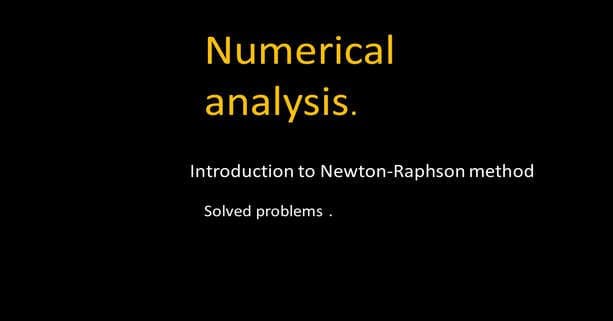Last Updated on March 21, 2024 by Maged kamel
Newton-Raphson method.
Newton Raphson’s method is another method for root finding. The Newton-Raphson expression of root-finding utilizes the linear approximation which we have discussed.
From the next slide image. L(xb)=f(xa)+f'(xa)*(xb-xa) as a is the starting point and the xb is the ending point Now if we consider that L(xb) approximately equals (xb) and create a little modification can be done on the previous equation by letting (xb-xa) on the left side, and then rewrite the equation.
We could say x final=x intial+(1/ slope at the ix initial)+(1/ slope at x intial)*(f(x fina)l- f(x initial).
If we are looking for xb where the root =0, or saying f(xb)=0.
The formula will be xb=xa+(1/f'(xa)(0-f(xa)=xa-(1/f'(xa)(f(xa).
The formula can be used to get the distance x for the root point b for which we are looking.
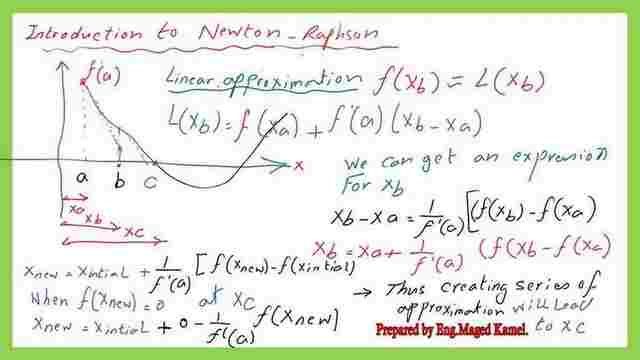
This will create another form of the equation as (xb-xa)=(1/f'(xa))*(f(xb)-f(xa). The next step is to find the value of xb which is=xa+(1/f'(xa))*(f(xb)-f(xa).
Suppose we have a curve and that curve we are looking for the root of that curve at a certain point. We want to find what is the x value of that root point. So we are saying that if we have x1 point, we go up and then we make a tangent at the curve at that point.
So we get another point which we call x 2 and we get a relation between x2 the new point and the old point. This relation will be x2=x1– f(x1) /f'(x1) as shown in the next slide image to continue this process till a point where we have f(x) close to or =0. This is the Newton-Raphson method.

Solved problem using the Newton-Raphson method.
First, the equation of Newton-Raphson is written. followed by a solved example #4 Example number 4. Use the Newton method to find the roots of the √29.
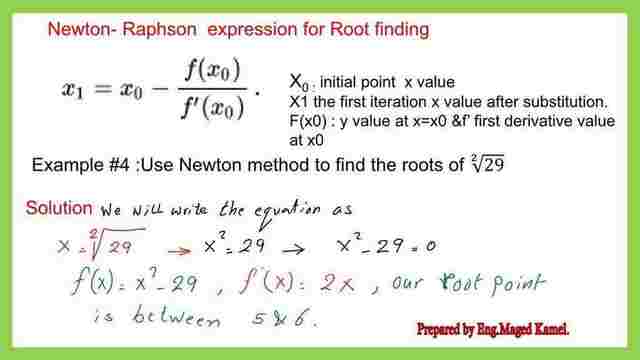
The solution will be made through the next steps.
We put x= √ 29 or it could be expressed at X^2= to 29 then let X^2-29 =0.
1-We readjust the formula a for the function and we equate it to 0.
2-We put x0=5 as starting point after that get f(5) = 5^2-29=-4.
The negative sign will change the relationship as we will see later.
3-Estimate the f'(x0=5) =(2*x0)-0=2*5.0=10.00.
4- Estimate X1 value by using the Newton-Raphson method, X1=5-(-4/10.00)=5.40.
5-This is for the first iteration. We started from X0 we got X1 then again we substituted by this new value which we are getting which is = 5.40. For the second iteration.
6- We put x1=5.40 as obtained from the previous iteration, f(5.40) = (5.40)^2-29=+0.16.
7-Estimate the f'(x1=5.40) =(2*x1)-0=2*5.40=10.80.
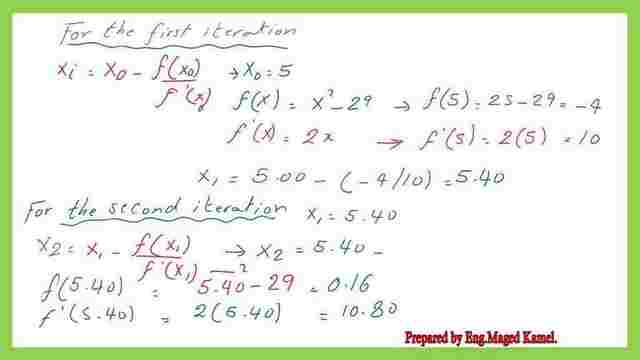
8- Estimate X2 value by using the Newton-Raphson method, X2=5.40-(+0.16/10.80)=5.3852.
9-x2=5.3852, check (5.385)^2-29=-0.001775 not zero, so proceed to get the next point x3.
For the third iteration.
10- We put x2=5.3852 as obtained from the previous iteration, f(5.3852) = (5.3852)^2-29=–0.00022
11-Estimate the f'(x1=5.3852) =(2*x2)-0=2*5.3852=10.7703.
12- Estimate X3 value by using the Newton-Raphson method, X2=5.3852-(-0.00022/10.7703)=5.38516.
13-x3=5.38516, check (5.38516)^2-29=4.2E-10 close to zero.

This is the Excel sheet showing the iterations of the different f(x) values and the first derivative values.
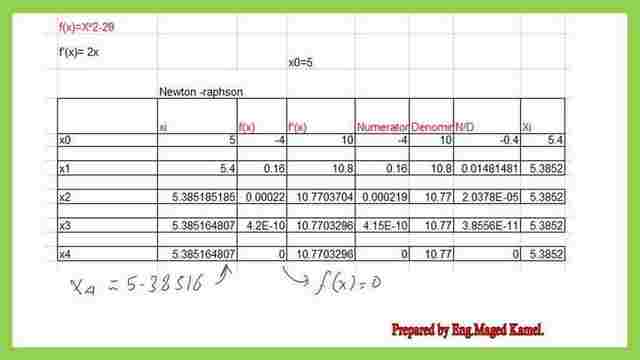
This is the pdf file used for the illustration of this post and the next post.
The next post is about the solved problems for the Newton-Raphson method.
This is a useful link for a numerical analysis calculator.
